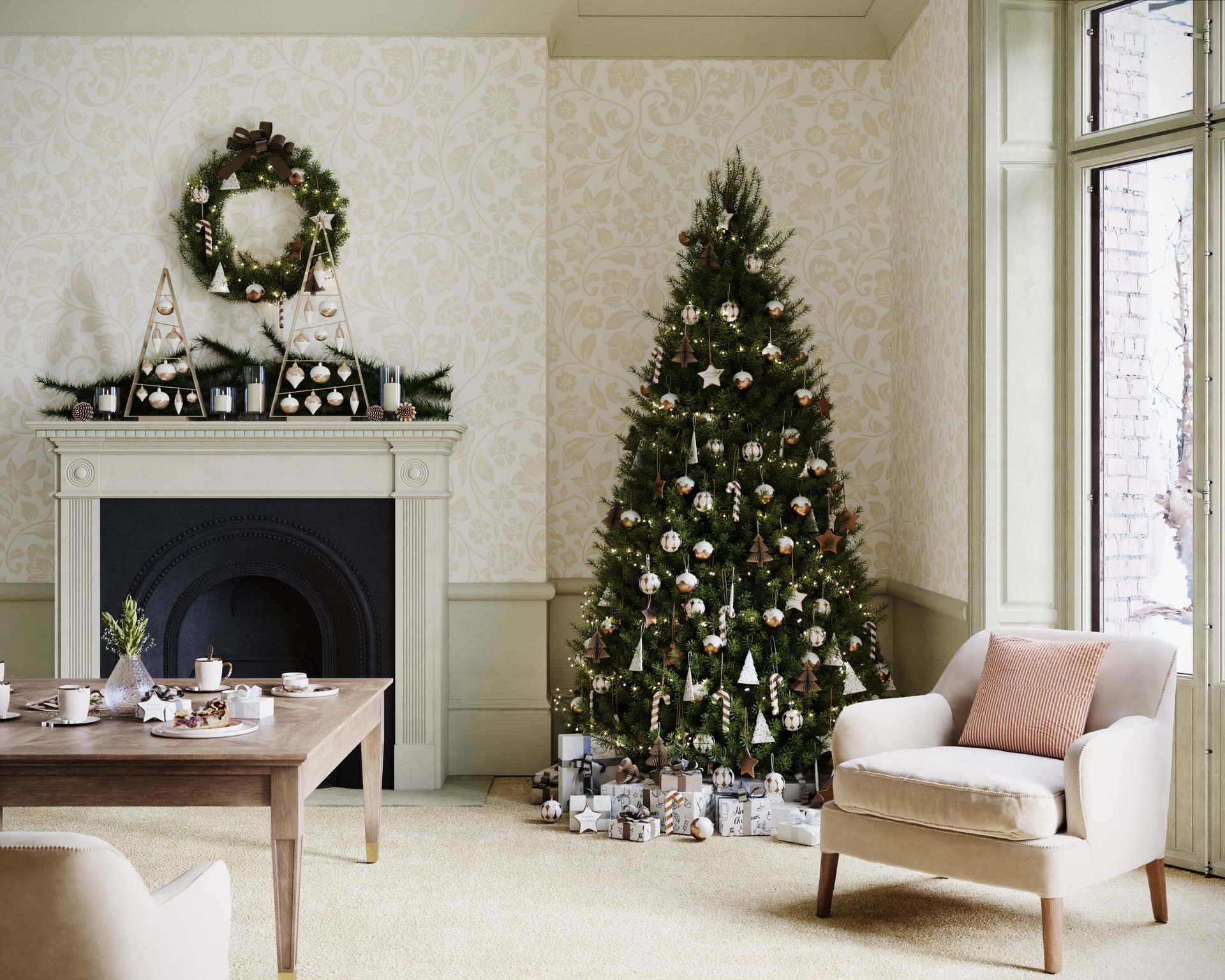Deck the halls: How to embrace this season’s Christmas decor trends without looking tacky, according to an interior design expert

It’s that time of year again when Brits are getting ready to dig out the Christmas decorations and pick out their tree, preparing to transform their homes for the most magical time of year.
If you’re the Pinterest type, you may have started to conceptualise the Christmas vibe you’d like your home to emulate, whether it’s festival-inspired brights or Scandi chic. Whatever your chosen theme, it can be hard to avoid the “tacky” look around Christmas, particularly if you’re looking to reuse old decorations, most likely involving garish plastic baubles.
James Mellan-Matulewicz, Creative Director and Designer at Bobbi Beck, has provided five expert tips on how to incorporate Christmas decor into your home without going down the tacky tinsel route.
“If you’re someone who prides yourself on a classic and design-led interior, Christmas could be your worst nightmare. Most of the decorations available to buy will likely involve plastic, garish colours and cheap-looking fairy lights, which can make your home look tacky and inharmonious.”
“But never fear! There are simple ways to master a number of Christmas looks in your home, doing “tacky”, tastefully. Classic red and gold is a Christmas staple and will always look good, but if you want to try something new this year without getting it wrong, there are a few simple ways to keep it tasteful no matter what your theme.”
Pick a theme
“When it comes to decorating your home, choose an aesthetic and stick to it. Mixing genres will lead to a mish-mash of decorations (and not in a kitsch and cool way). There are lots of new themes on the rise this year to consider, including Great Gatsby-inspired art deco and vibrant festival brights. Even if you’re going all out with the multi colour festival theme, it can still look curated and classy if you stick to it closely. Throwing in some Scandi chic silver owls and icicles will throw the theme off completely and look ill-thought-out so stay in a lane and enjoy the ride.”
Complement don’t clash
“When you are choosing how to decorate your home, consider the decor you already have and work with this. If your home is already an eclectic treasure trove, then coloured glass candelabras and paper bunting will look fabulous. However, if your home is a tranquil sea of neutrals, you should decorate in similar tones. You can go as over-the-top with the amount of decorations as you want but making sure they complement your existing style drops in that touch of tastefulness.”
Give a nod to nostalgia
“This season has seen a hark back to some of the Christmas decorations of past times, such as retro garlands, chintzy tree decorations and velvet tree bows. Pretty bows can be mixed into traditional red and gold displays, retro garlands can be a focal point on a mantel and a smattering of shiny baubles are a respectful wink to trends gone by. However, avoid reaching for the tinsel or foil bunting as these are outdated and not very eco-friendly. A subtle nod to nostalgia is all that’s needed to keep it stylish.”
Avoid ‘too much of a good thing’
“There are lots of fun decorations available to buy this year, like Christmas gonks, coloured candles and pop culture based baubles. These can all add a quirky touch to your Christmas decor but, to keep it tasteful, use them sparingly. Adorning your tree solely in pink giraffes and cheese board baubles will mean your decorations don’t stand out. Only including a few of these carefully selected styles will make them really pop and be a focal point for your display rather than an assault on the eyes.”
Be sustainable
“No matter how wild you choose to go with your decorations this year, choosing sustainable options will always make things more refined. Wooden tree decorations, paper garlands and reusable crackers are all on offer this year. Choosing to be more eco-friendly with your Christmas theme shows thoughtfulness, which is always classy and very on-trend. No matter how tacky you end up going, your sustainability efforts will make it tasteful.”
These tips were released by James Mellan-Matulewicz, CEO of luxury, sustainable wallpaper brand Bobbi Beck, which provides a number of wallpaper designs to suit a range of tastes and personalities.






